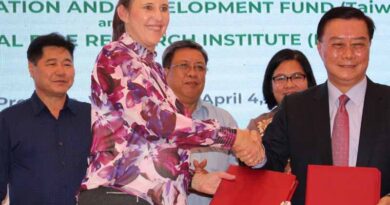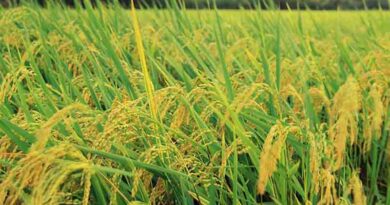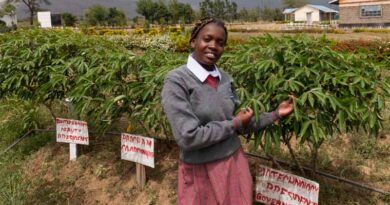New book chronicles project’s success in increasing rice yields and farmers’ profitability in six Asian countries
10 November 2023, Philippines: The achievements of Closing Rice Yield Gaps in Asia (CORIGAP), a 10-year, multi-country project, in reaching hundreds of thousands of Asian farmers and raising their productivity have been compiled in the new book Closing Rice Yield Gaps in Asia: Innovations, Scaling, and Policies for Environmentally Sustainable Lowland Rice Production.
Martin Gummert, CORIGAP coordinator from 2020-2022, said CORIGAP’s main goals were to reduce yield gaps to strengthen future food security and increase environmentally sustainable rice production in intensive lowland systems in China (Guangdong Province), Indonesia, Myanmar, Sri Lanka, Thailand, and Vietnam.
By the end of CORIGAP’s three phases, the project reached more than 883,000 farmers, exceeding its target of 500,000 farmers. Initial reports submitted by CORIGAP’s national partners showed that farmers who adopted CORIGAP technologies and management practices increased their rice yields between 1-20% and their profits between 15-30%.
“Its achievements are met– even overachieved,” said Céline Fürst, Deputy Head of Mission chez Embassy of Switzerland in the Philippines.
Closing rice yield gaps. Accelerating sustainable progress is the culmination of more than two decades of work between the International Rice Research Institute (IRRI), the Swiss Agency for Development and Cooperation (SDC), national agricultural research and extension systems (NARES), and government agency partners spread across six Asian countries.
The book was written to recount the implementation and changes brought in the six countries as well as the spillover effects in Cambodia and the Philippines, according to Anny Ruth Pame, a scientist for Adaptive Agronomy at IRRI and member of the project. “The success of CORIGAP is due to the enduring ties with its country partners,” said Ms. Pame.
The book’s key messages serve as a guide for a wide array of stakeholders, such as farmers, extension workers, and policymakers, in deciding which best management practices and climate-smart technologies to implement in their respective areas.
“Sometimes we couldn’t work with what we had because environmental conditions were not compatible,” said IRRI scientist Melanie Connor.
It is important for CORIGAP’s mission that the technologies they scale out toward their partner countries answer the needs of their stakeholders. For example, Vietnam adopted One Must Do, Five Reductions (1M5R) while China had the Three Controls Technology.
Another example of how strong partner engagement helped CORIGAP achieve its goals was the formation of several Learning Alliances across their partner countries. These are testaments to the importance of partner engagement in CORIGAP’s work.
“The key thing is we wanted to understand our partners better,” Engineer Gummert said. “When you listen to their needs, they become your partners beyond work.”
With its goals achieved in Asia, CORIGAP could have the same impact in Africa.
“The project has a potential for replication in Africa where yield gaps are much higher,” said Dr. Connor.
The book that was launched at the 6th International Rice Congress hopefully aims to foster further and stronger South-South cooperation. It also proves that development assistance can be successful when beneficiaries are well-embedded in the program implementation.
Also Read: Hidden costs of global agrifood systems worth at least $10 trillion
(For Latest Agriculture News & Updates, follow Krishak Jagat on Google News)















